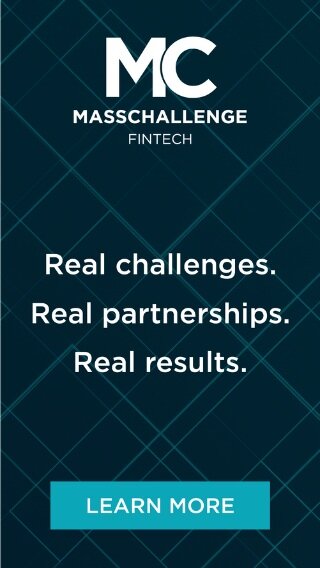Loyalty needs a new value exchange
/Will Reeves is co-founder and CEO of Bitcoin rewards platform Fold. He has led product teams at Thesis, A3Ventures and BYND, driving digital transformation and innovation projects for Google and other Fortune 500 firms.
Loyalty programs no longer deliver on their original promise. Instead, the industry has redefined it as a series of hoops to jump through for rewards users are unlikely to ever redeem.
On paper, the industry looks healthy. The global loyalty market is expected to grow from $93 billion this year to over $155 billion by 2029. Behind those numbers is another story: most programs don’t work. More than half of all memberships are completely inactive. The average household belongs to 30 loyalty programs but uses only 12, a 60% dropout rate in an industry built on engagement.
It’s evident consumers haven’t opted out entirely, but they’ve stopped pretending these systems offer real value.
The points problem
The design on how people are rewarded is flawed and outdated. Most programs, like those offered by credit card companies and airlines, still rely on their own made-up currency: points, stars and miles. They’re branded, restricted, and constantly shifting. Some expire. Some are impossible to redeem. Most are worth far less than customers are led to believe. That kind of reward doesn’t build trust. It builds fatigue.
Younger consumers see through it faster. Gen Z is more likely than millennials to join loyalty programs, but only if the experience feels intuitive and the rewards feel meaningful. They don’t have patience for tracking points that can’t be used outside a single app. Even older generations are pulling back. Baby boomers still participate in high numbers, but they want rewards that don’t vanish or come with confusing conditions.
Why rewards can feel hollow
The promise of points used to be enough. Spend money, get something back. Now it feels hollow: a discount buried in conditions, a currency with no meaning beyond the brand that issued it. Customers are tired of loyalty systems that serve the company more than the people who use them.
Building a better model
The solution is simple: value must flow back to the consumer without friction. A winning loyalty model requires companies to abandon the smoke and mirrors of points that expire, devalue, or are locked behind impossible restrictions. Loyalty programs should reward genuine engagement by being transparent, reliable and predictable, moving past conditional perks toward rewards that are actually assets. This fundamental change aligns value between the company and the individual: when rewards provide customers with concrete, usable value they can count on, they can build real savings and increase their purchasing power.
Some companies have already taken notice. The shift is on from internal currencies to rewards people actually want — not perks, but assets they can use, move, or keep, offering real value instead of store credit.
Bitcoin rewards are one version of this shift, offering customers a portion of their purchase back in cryptocurrency. It doesn’t expire. It doesn’t live inside a brand portal. Others offer crypto-linked cashback cards or rewards that can be traded outside their platform. These are no longer fringe experiments. They’re early signals of what consumers now expect: control and lasting value.
Beyond digital assets
Some loyalty programs now emphasize access through early product releases, member-only events and personalized experiences. Sephora, for example, offers in-store sessions and early access to bestsellers. Others are rethinking what a “reward” even means. At Patagonia, customers can trade in old jackets or buy refurbished ones through its Worn Wear program, earning perks for choosing reuse over new. TTerraCycle gives points to customers who mail in empty mascara tubes or chip bags, waste that would otherwise go unrecycled. These programs aren’t trying to feel smart. They’re trying to feel fair.
There’s no single model replacing the old one, but there is a pattern. The loyalty programs that still work don’t assume loyalty; they earn it in small, specific ways by respecting time, being easy to use, and offering rewards that aren’t locked behind rules.
This doesn’t mean points are disappearing. They still drive behavior in certain industries. Travel and hospitality, for instance, have trained customers to see miles as a kind of parallel currency. Even in those industries, the cracks are obvious. Redemption costs have skyrocketed and predictability is gone. Delta’s domestic flights that once cost 12,500 miles now often exceed twice that amount, with dynamic pricing pushing some routes into six figures. British Airways raised award prices by 60 percent in one year.
Marriott’s most expensive hotels now require more than 600,000 points for a single night. Hilton raised its top-tier redemptions to 200,000. These aren’t fringe properties. They’re just no longer within reach for the people who’ve stayed loyal.
Companies continue to spend heavily on programs customers don’t remember signing up for. And as acquisition costs rise, retention gets harder. The irony is that loyalty, when it works, is still more cost-effective than constant churn. But the mechanics have to match what customers actually care about now. That’s where most programs fall apart. They still try to control the customer, treating rewards as a way to gatekeep value. That approach worked when people had fewer options and longer attention spans, but it doesn’t anymore.
Loyalty isn’t earned by keeping people inside a system. It’s earned by giving them something they can take with them when they leave.














